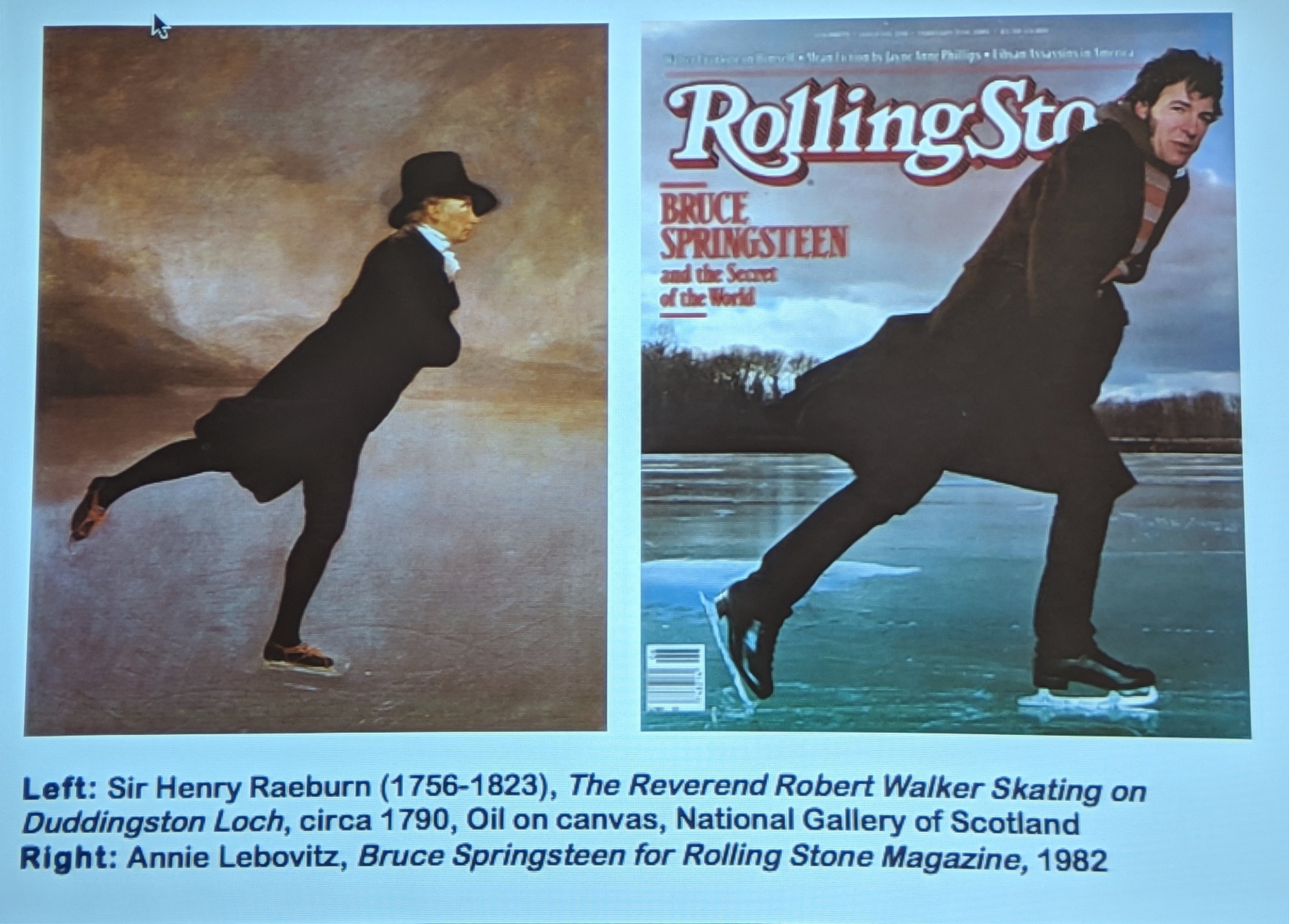The painter and printmaker John Hedley gave a talk on the work in his exhibition 'Fingertips in Time' at Oriel Colwyn on Thursday 7th March 2019. The exhibited images fall into two series, one of trees presented as monochrome prints which looked almost like charcoal sketches and the other, a series of multicoloured print studies of volcanic rock formations from two sites, one at Llandwyn Island on Anglesey and the other in Crete. John talked about the techniques he used in making these and also more extensively about his work in general including his paintings, sculpture and work with mixed media. My interest in his processes relates to his use of digital camera photographs as the starting point and how he went about transforming these into intaglio prints. He explained that he prints the photographs as a positive image at high resolution (600 dpi bitmapped) onto acetate, using an A3 inkjet photo quality printer. The acetate is then exposed in a UV light box (Natgraph) onto a photopolymer etching plate (Solar Plate), which when processed and prepared (polished) can be inked up for printing onto dampened paper in a press.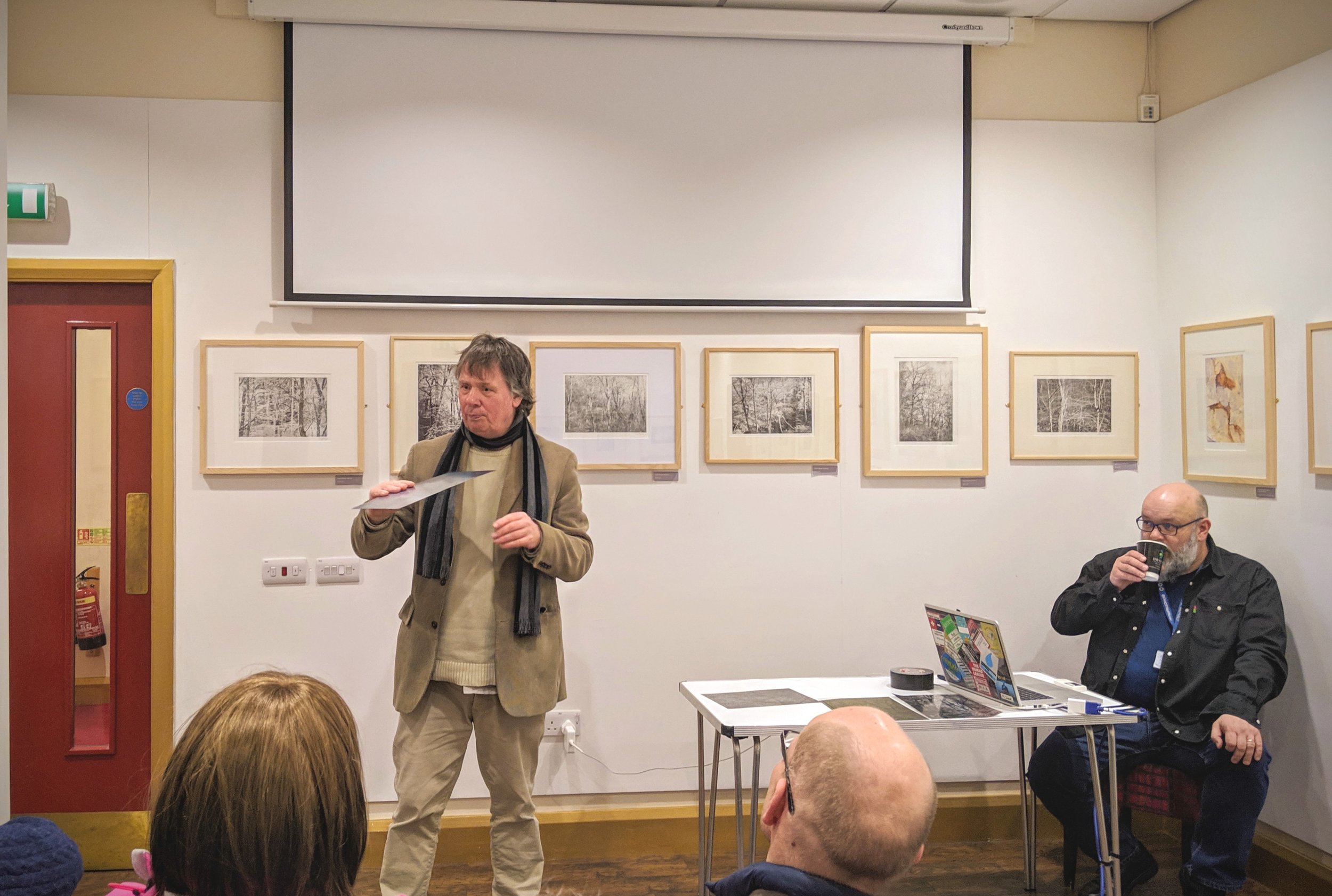 He explained that until recently, he had been wary of using photography as he felt this was almost like cheating. When he started using a digital SLR camera he discovered that the learning process was more complicated than he had anticipated; the main difficulty being obtaining a perfect tonal range which would be compatible with his printmaking processes. After a fair amount of "learning by mistakes" he has found that photography and image processing (layering in Photoshop) is now influencing his painting which has become "more abstract, in a round about way". He feels the main difference between most photographers and painters is that photographers feel they need to know what the end result will be at the time they press the shutter - i.e. classic 'pre-visualisation' as advocated by Ansel Adams (Schaefer, 1992) and the f64 group (and most photographers since then). In his printmaking, especially with multiple layers of coloured inks, he seldom knows what it will look like when finished and part of the process of abstraction is that the image evolves layer by layer, as it is being made.
He explained that until recently, he had been wary of using photography as he felt this was almost like cheating. When he started using a digital SLR camera he discovered that the learning process was more complicated than he had anticipated; the main difficulty being obtaining a perfect tonal range which would be compatible with his printmaking processes. After a fair amount of "learning by mistakes" he has found that photography and image processing (layering in Photoshop) is now influencing his painting which has become "more abstract, in a round about way". He feels the main difference between most photographers and painters is that photographers feel they need to know what the end result will be at the time they press the shutter - i.e. classic 'pre-visualisation' as advocated by Ansel Adams (Schaefer, 1992) and the f64 group (and most photographers since then). In his printmaking, especially with multiple layers of coloured inks, he seldom knows what it will look like when finished and part of the process of abstraction is that the image evolves layer by layer, as it is being made.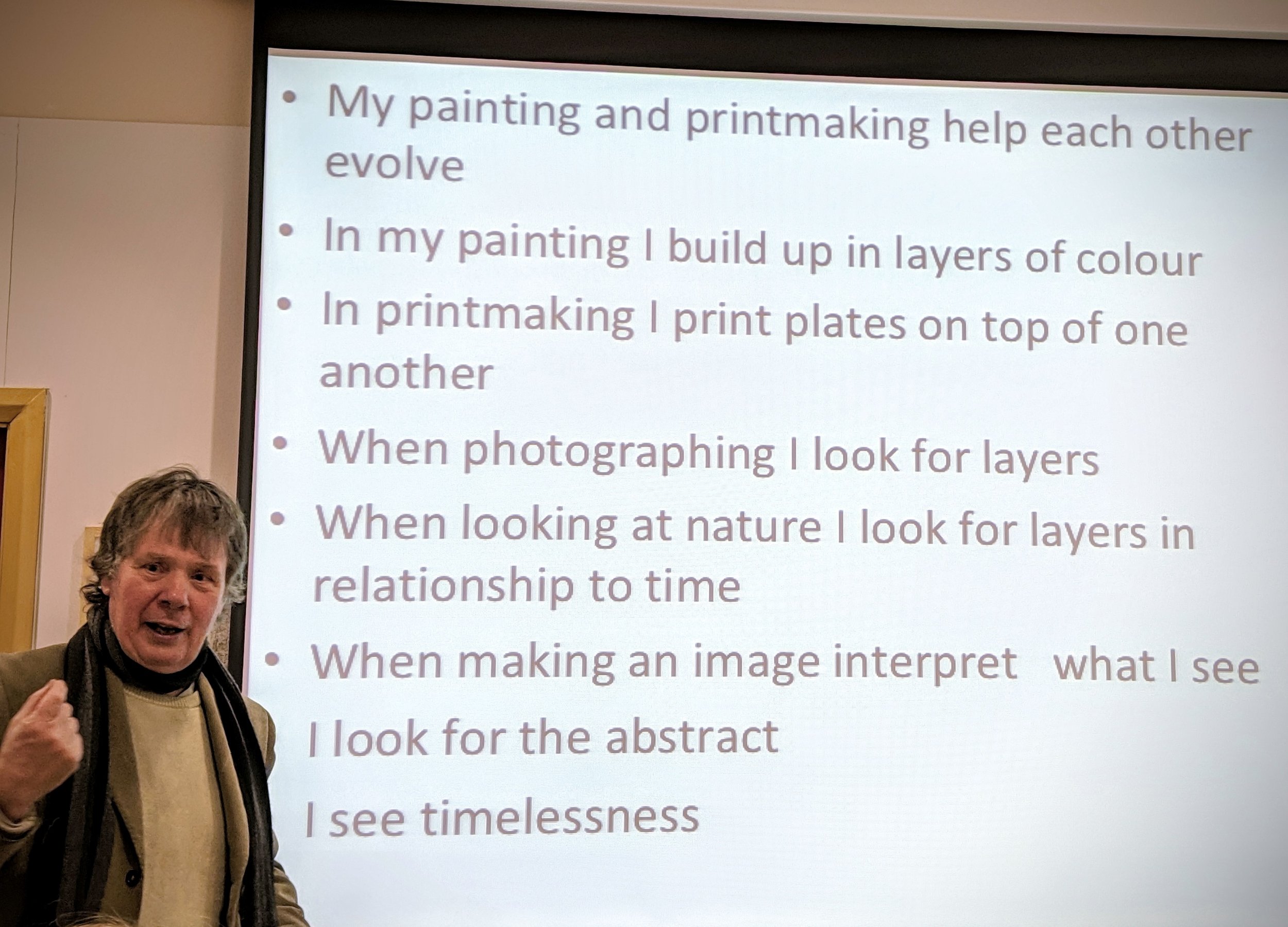 Expanding on this, he explained that in deciding what to photograph he looks for the the most obscure and abstract things he can find, often now looking in nature for visual representations of layers; one tree in front of others, shadows on rocks or sand, layers in dead wood or rock formations, layers in time. In interpreting what he can see, he is taking from nature then playing and abstracting from it. He described this process as "being like building with Lego - start with the finished object - take it apart then re-build it - it will look similar but not exactly the same".To my surprise, I found that I had more in common with his approach than I had expected. In discussion with the audience, he talked of shadows in art as having ambiguity, transience - similar to the feelings I have been trying to capture in my photographs of shadows. I had not previously grasped the significance of layers but in many of my images, that could be what gives them the impression of texture. I felt comfortable with his explanations of abstraction, a concept I have had difficulty fully understanding previously. He is clearly happy now using a hybrid of digital photography and traditional printing, feeding contemporary technology into long established analogue processes. He is going to be in Greece for the next couple of months but has offered to let some of us visit his studio to share his technical knowledge. Having never seen photo-etching in practice or intaglio prints being made, I still have some difficulty in understanding exactly how it works and this is now on my list to do over the summer. I am sure that the learning curve for developing his printmaking skills was much steeper and longer than it took him to get what he needed from digital photography but I am still interested in printing digital negatives on acetate for use with historical U-V light based photographic processes and his advice on file preparation and printing technique could be invaluable.His final comment on his acceptance of photography as a tool for image making was to concede that "the mobile phone has become the sketch-book of the 21st century".The images used to illustrate this post were captured on my mobile phone camera.Schaefer JP (1999) 'Visualisation: The Art of Seeing a Photograph' In: Ansel Adams Guide - Basic Techniques of Photography Book (1); Revised edition, Boston-New York-London, Little, Brown and Company, pp 131-134.
Expanding on this, he explained that in deciding what to photograph he looks for the the most obscure and abstract things he can find, often now looking in nature for visual representations of layers; one tree in front of others, shadows on rocks or sand, layers in dead wood or rock formations, layers in time. In interpreting what he can see, he is taking from nature then playing and abstracting from it. He described this process as "being like building with Lego - start with the finished object - take it apart then re-build it - it will look similar but not exactly the same".To my surprise, I found that I had more in common with his approach than I had expected. In discussion with the audience, he talked of shadows in art as having ambiguity, transience - similar to the feelings I have been trying to capture in my photographs of shadows. I had not previously grasped the significance of layers but in many of my images, that could be what gives them the impression of texture. I felt comfortable with his explanations of abstraction, a concept I have had difficulty fully understanding previously. He is clearly happy now using a hybrid of digital photography and traditional printing, feeding contemporary technology into long established analogue processes. He is going to be in Greece for the next couple of months but has offered to let some of us visit his studio to share his technical knowledge. Having never seen photo-etching in practice or intaglio prints being made, I still have some difficulty in understanding exactly how it works and this is now on my list to do over the summer. I am sure that the learning curve for developing his printmaking skills was much steeper and longer than it took him to get what he needed from digital photography but I am still interested in printing digital negatives on acetate for use with historical U-V light based photographic processes and his advice on file preparation and printing technique could be invaluable.His final comment on his acceptance of photography as a tool for image making was to concede that "the mobile phone has become the sketch-book of the 21st century".The images used to illustrate this post were captured on my mobile phone camera.Schaefer JP (1999) 'Visualisation: The Art of Seeing a Photograph' In: Ansel Adams Guide - Basic Techniques of Photography Book (1); Revised edition, Boston-New York-London, Little, Brown and Company, pp 131-134.
Anders Pleass : Making and taking pictures - a selective relation between painting and photography.
This gallery lecture was delivered by Anders Pleass, at Oriel Colwyn on 28th February, in support of their current exhibition of John Hedley's images of rock formations and trees, which are produced using a combination of digital photography with traditional intaglio printmaking. In a wide-ranging presentation, he described his personal journey from an undergraduate in environmental biology to studying fine art and his attempts to take the lessons from his scientific background into painting, incorporating these in a creative model in developing his 'post-painterly abstraction' techniques for making images. As the slide from his talk used as a featured image for this post shows, he has a detailed knowledge of art history and an ability to recognise when artists (and photographers) reference work from the past when researching their ideas for projects. He described in detail his own research into art theory, significantly influenced by the writings of modernist and post-modernist thinkers, notably the visual art critic Clement Greenberg, the philosopher A. J. Ayer and the novelist and art theorist André Malraux. The artists whose work influenced his practice included Morris Lewis, Ian Davenport, Calum Innes and Bernard Frize but in addition to post-painterly abstraction he studied Systems Theory (Humberto Maturana), Chaos Theory (Edward Norton Lorenz) and comparative embryology, Emergence Theory and more general interests including theatre (especially Shakespeare and the Riddle of the Sphinx from Oedipus Rex).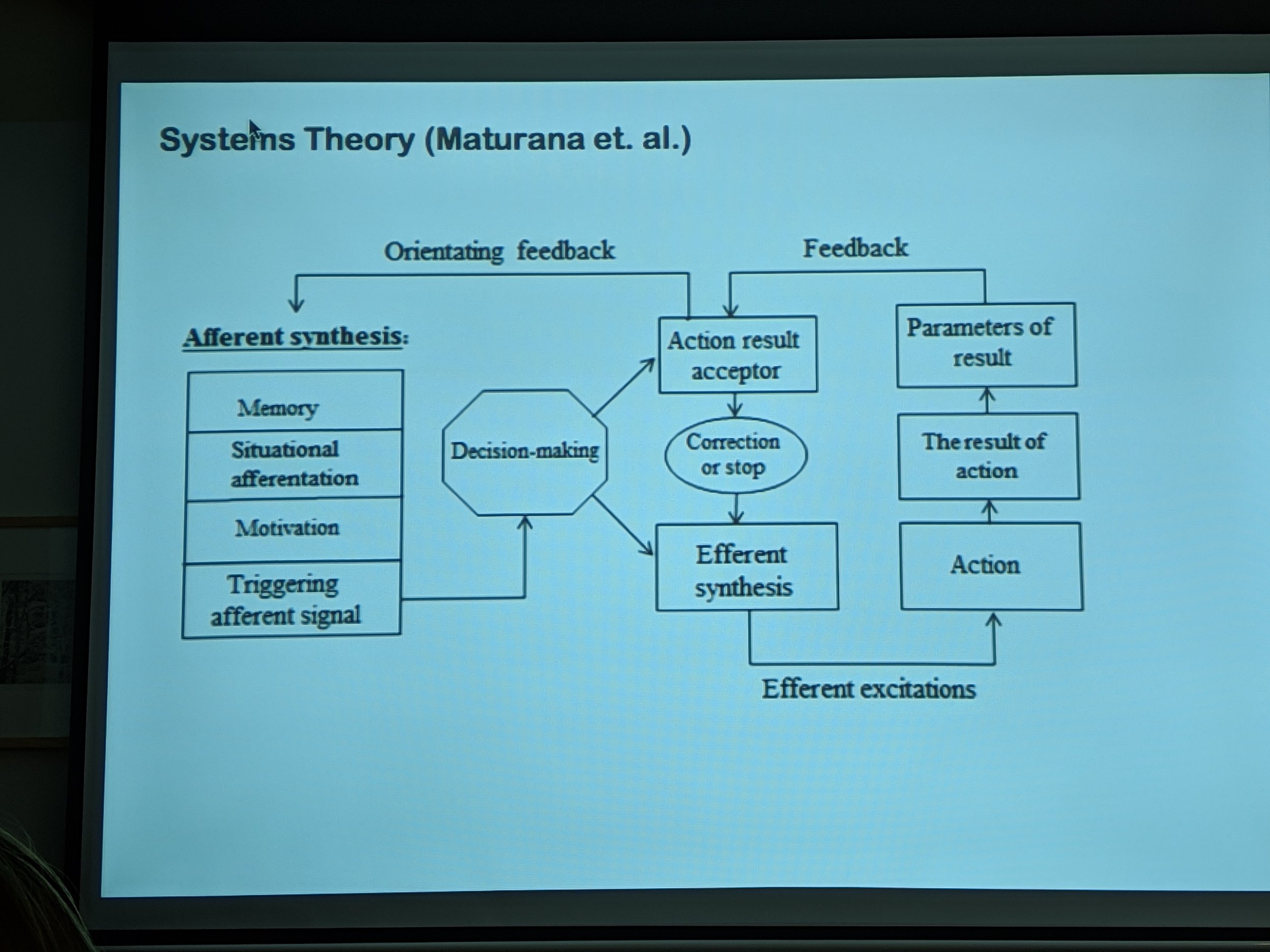 The artist he worked most closely with was Brad Lochore, some of whose large paintings of shadows (which I was previously unaware of) are superficially very similar to a series of photographs I have been making over the last two years. Pleass assisted in the making of these paintings for several years as a painter technician and explained that they were based on photographs which were transcribed onto canvas, section by section using a technique which he described as being almost like 'painting with numbers'.
The artist he worked most closely with was Brad Lochore, some of whose large paintings of shadows (which I was previously unaware of) are superficially very similar to a series of photographs I have been making over the last two years. Pleass assisted in the making of these paintings for several years as a painter technician and explained that they were based on photographs which were transcribed onto canvas, section by section using a technique which he described as being almost like 'painting with numbers'.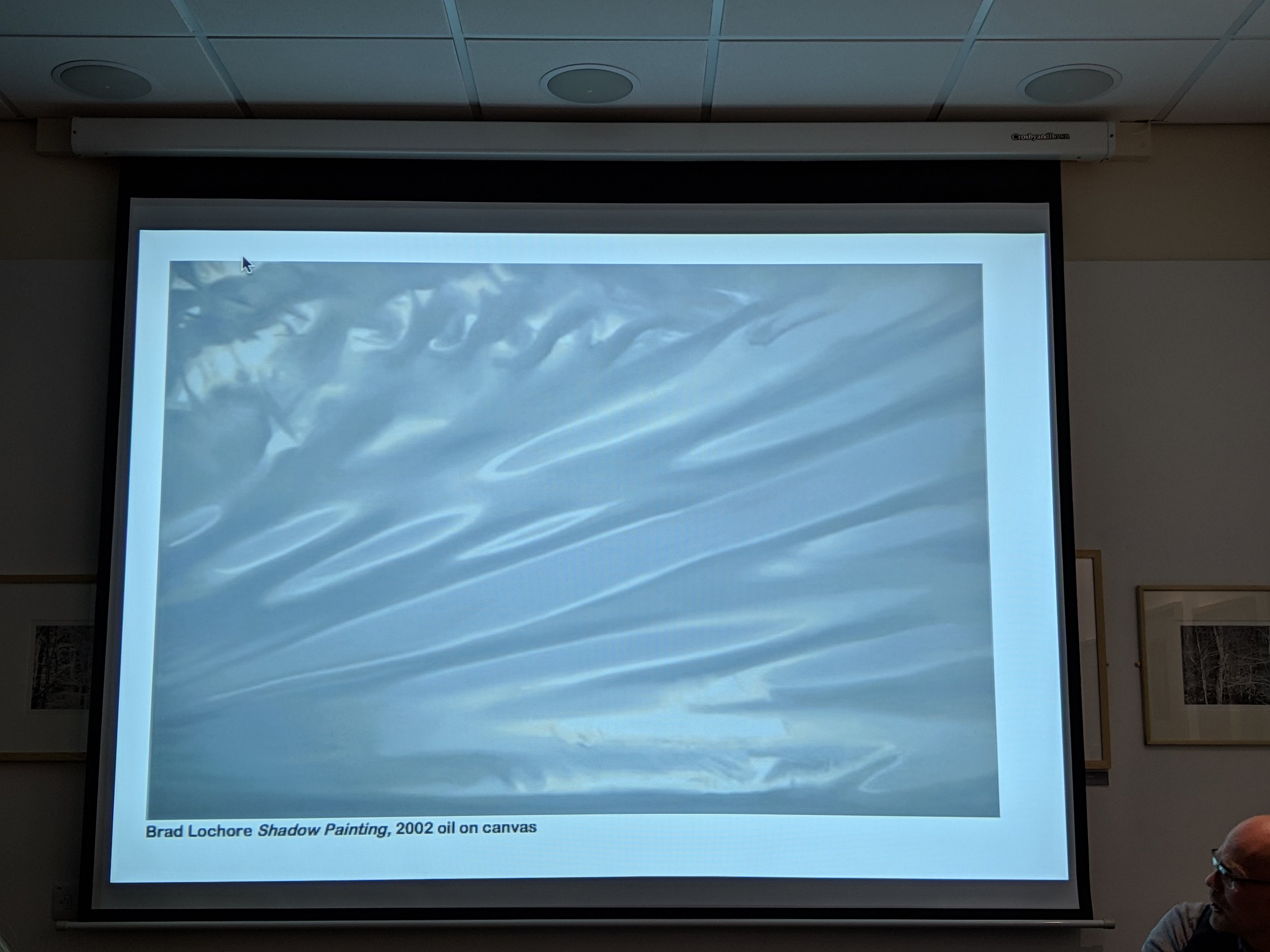 Although his work with Lochore provided an income, he had no artistic input (Lochore never involved him in the creative process or even discussed the images with him) and he went on to talk candidly about the tribulations of trying to establish his own career as an artist and his subsequent transition to his present vocation as a freelance curator. He first met John Hedley in 2014 when they were both teaching in the Arts Department at Coleg Llandrillo and credits Hedley with introducing him to the educational concepts of visual literacy and hermeneutics. He described the working process used by Hedley as 'primordial image formation', images which appear as metamorphoses evolving from the natural world. The two groups of intaglio prints in this exhibition are firstly monochrome images trees in a woodland and secondly the surfaces of rock formations (in Anglesey and Crete). Pleass feels that the real subject of them is 'time', as in ideas of time moving slowly, the timescales of their references to art history and geological time. He also commented on the similarities in some of them to satellite images and aerial photography.My interest in the work and the reason for going to this lecture, was in the process used as an example of a hybrid technique which combining photography with traditional printmaking. While I am still exploring several potential areas for my research project, it will include studying an aspect of the interface between analogue and digital technology (hence the title of my blog). I also have a shared interest in his subject matter having worked with textures in, rock surfaces, tree bark and sand dunes as well as my photographs of shadows, reflected light and paintwork. The additional bonuses of attending this talk were the depth of the contextual background information covered by Pleass and learning about several artists whose work I should now consider. John Hedley is giving his own talk about his working methods in the next few weeks and I hope to be able to get there.
Although his work with Lochore provided an income, he had no artistic input (Lochore never involved him in the creative process or even discussed the images with him) and he went on to talk candidly about the tribulations of trying to establish his own career as an artist and his subsequent transition to his present vocation as a freelance curator. He first met John Hedley in 2014 when they were both teaching in the Arts Department at Coleg Llandrillo and credits Hedley with introducing him to the educational concepts of visual literacy and hermeneutics. He described the working process used by Hedley as 'primordial image formation', images which appear as metamorphoses evolving from the natural world. The two groups of intaglio prints in this exhibition are firstly monochrome images trees in a woodland and secondly the surfaces of rock formations (in Anglesey and Crete). Pleass feels that the real subject of them is 'time', as in ideas of time moving slowly, the timescales of their references to art history and geological time. He also commented on the similarities in some of them to satellite images and aerial photography.My interest in the work and the reason for going to this lecture, was in the process used as an example of a hybrid technique which combining photography with traditional printmaking. While I am still exploring several potential areas for my research project, it will include studying an aspect of the interface between analogue and digital technology (hence the title of my blog). I also have a shared interest in his subject matter having worked with textures in, rock surfaces, tree bark and sand dunes as well as my photographs of shadows, reflected light and paintwork. The additional bonuses of attending this talk were the depth of the contextual background information covered by Pleass and learning about several artists whose work I should now consider. John Hedley is giving his own talk about his working methods in the next few weeks and I hope to be able to get there.

